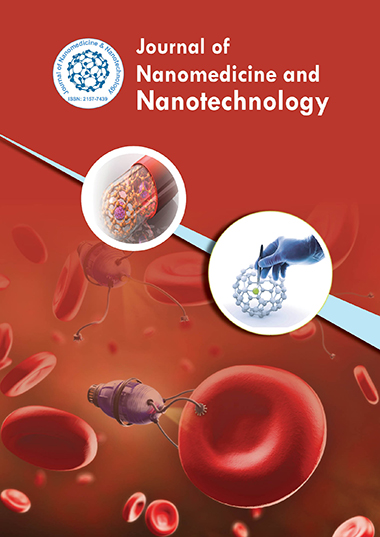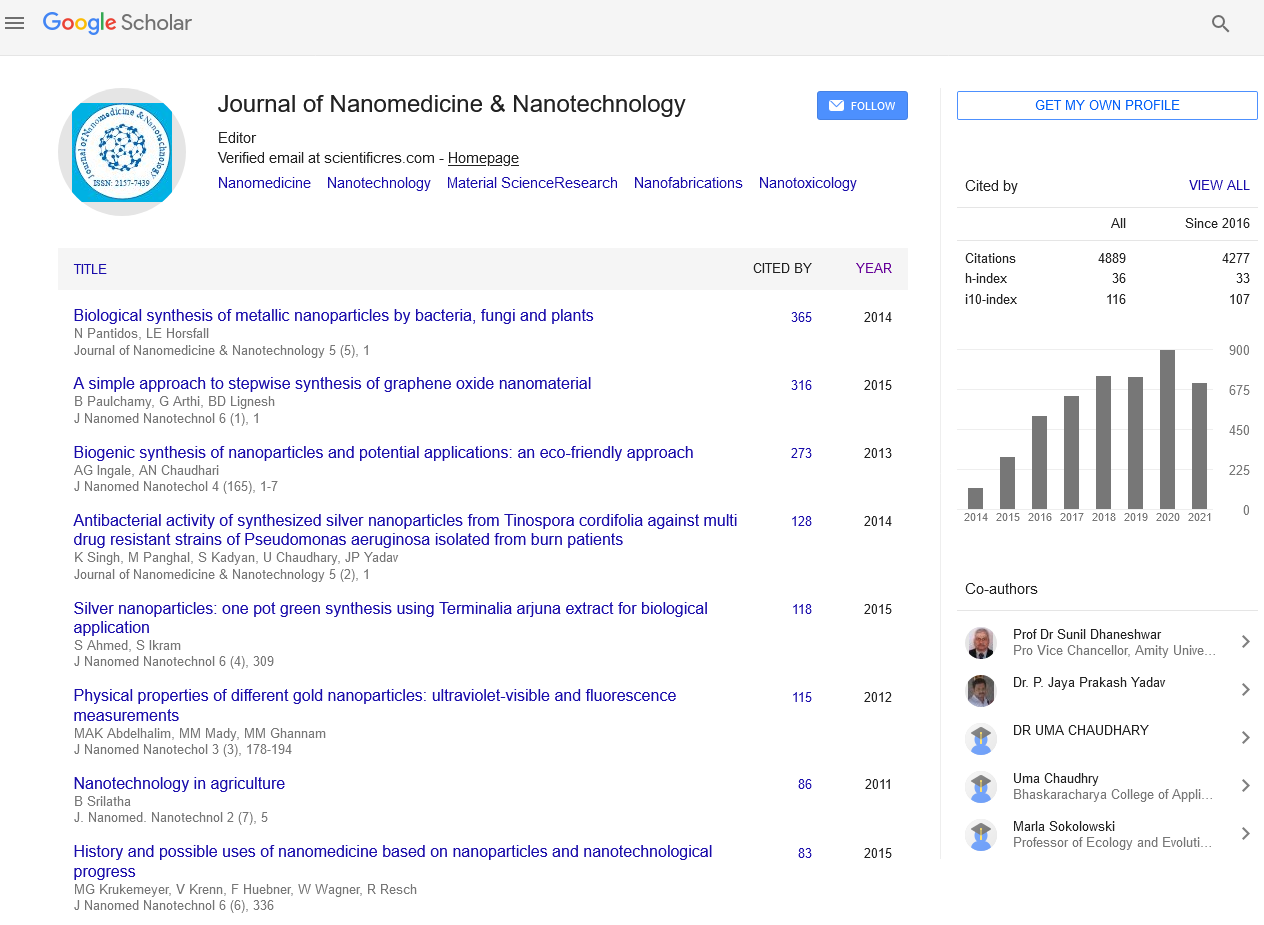Indexed In
- Open J Gate
- Genamics JournalSeek
- Academic Keys
- JournalTOCs
- ResearchBible
- China National Knowledge Infrastructure (CNKI)
- Scimago
- Ulrich's Periodicals Directory
- Electronic Journals Library
- RefSeek
- Hamdard University
- EBSCO A-Z
- OCLC- WorldCat
- SWB online catalog
- Virtual Library of Biology (vifabio)
- Publons
- MIAR
- Scientific Indexing Services (SIS)
- Euro Pub
- Google Scholar
Useful Links
Share This Page
Journal Flyer

Open Access Journals
- Agri and Aquaculture
- Biochemistry
- Bioinformatics & Systems Biology
- Business & Management
- Chemistry
- Clinical Sciences
- Engineering
- Food & Nutrition
- General Science
- Genetics & Molecular Biology
- Immunology & Microbiology
- Medical Sciences
- Neuroscience & Psychology
- Nursing & Health Care
- Pharmaceutical Sciences
Highly energetic nanobiocomposite by DNA self-assembly
24th World Congress on Nanomaterials and Nanotechnology
July 12-13, 2018 Bangkok, Thailand
Carole Rossi, Theo Calais, Fabien Mesnilgrente, Samuel Charlot and Alain Esteve
University of Toulouse, France
Posters & Accepted Abstracts: J Nanomed Nanotechnol
Abstract:
Over the two last decades, the combination of aluminum nanoparticles (nAl) with strong oxidizers offers new perspectives in nano-energetic materials. The main line driving most of research in energetic nanomaterials was to enhance the surface area and to maximize the intimacy between reactive components to increase the reaction rate and decrease the ignition delay, while improving safety. In the last decade, interesting progresses in Al based energetic materials and related systems have been done through the development and discovery of new oxidizing materials (CuO, Fe2O3, MoO3, Bi2O3, PTFE) and/ or implementation of precise assembly and functionalization approaches. Interestingly, different self-assembly techniques have been developed in order to favor Al-oxide interactions and limit metal-metal or oxide-oxide interactions. The simplest idea is the modification of charges at the nanoparticle surfaces by opposite charged ligands grafting or directly in aerosols. The electrostatic interactions between opposed charged metallic and oxide nanoparticles optimize the assembly and allows an enhancement of combustion properties. In this context DNA nanotechnology to direct the assembly of Al and CuO nanoparticles in aqueous solution is particularly attractive. DNA strand is a versatile building block to self-assemble a broad range of nanomaterials because the sequence and chemical termination can be tailored to accommodate various self-assembly approaches. The assembly is based on a direct hybridization of two complementary oligonucleotides functionalized on Al and CuO nanoparticles. In this contribution, the nanoscale assembly of Al and CuO nanoparticles is presented. We experimentally show that the aggregation kinetics regimes greatly impact the energetic nanobiocomposite combustion properties before concluding on potential application of such materials.


